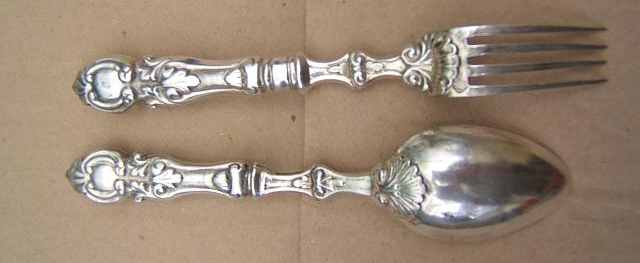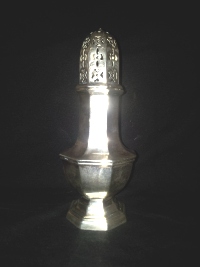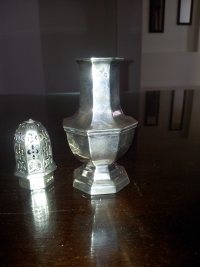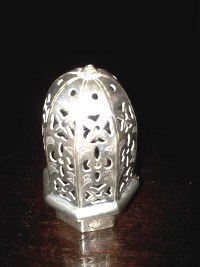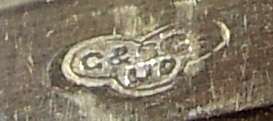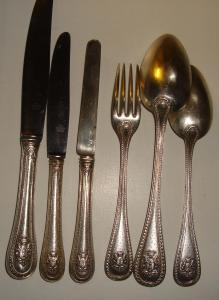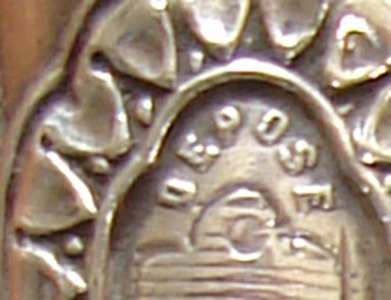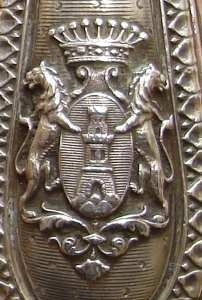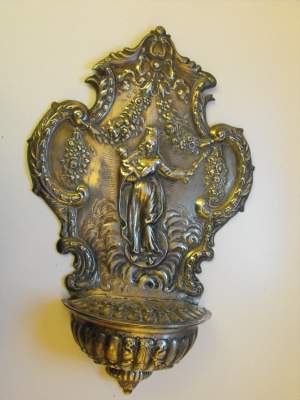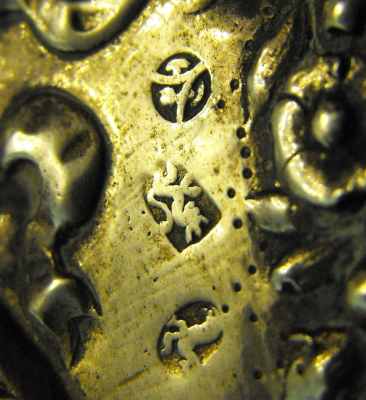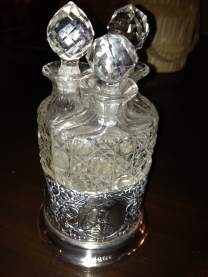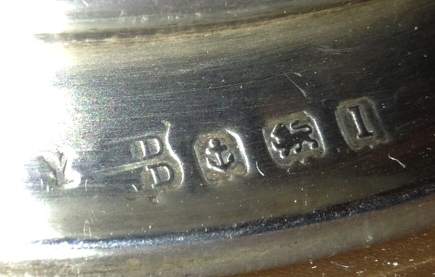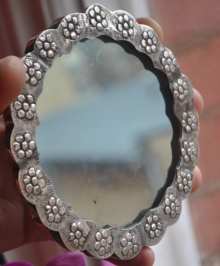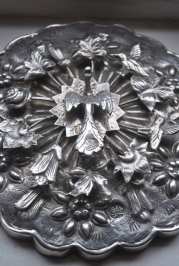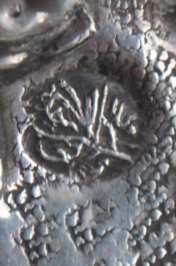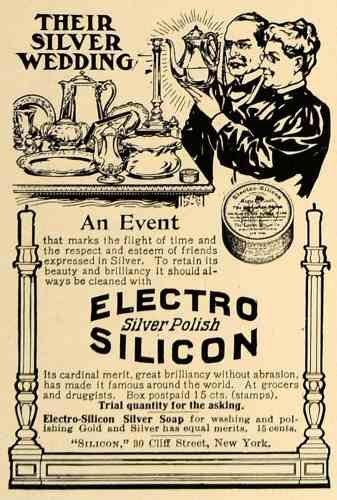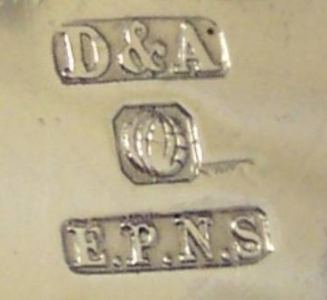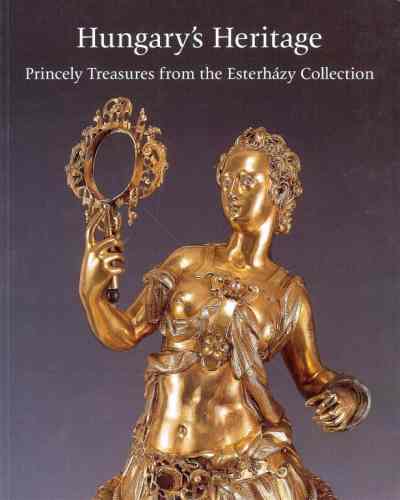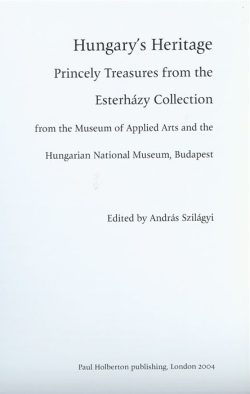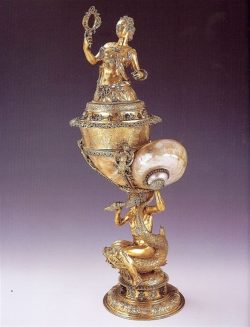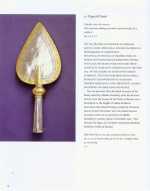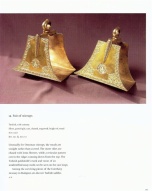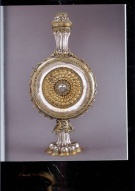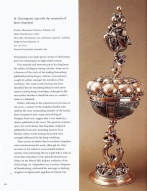 newsletter # 95 April 2012
newsletter # 95 April 2012www.ASCASonline.org SITE MAP
email: silverassociation@yahoo.it
YOUR GUIDE TO APRIL NEWSLETTER:
articles
new
members
members' window
|
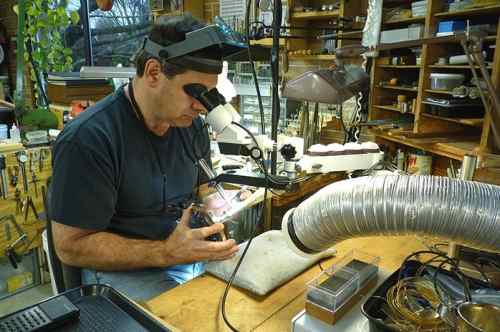
Jeffrey Herman presents:
|
New members
Welcome to new ASCAS members:
Jesse Daniels - USA
Danielle Fourny - France
Sarah George - England UK
Dimitris Giannoglou - Greece
Leigh Greer - USA
Andrew Jacques - Canada
Susan McTigue - USA
John Potts - England UK
David A. Roberson - USA
Joseph Scerri - Malta
Joan Sticha - USA
Michael Wink - Germany
|
top page -
page map |
Members' Window # 95
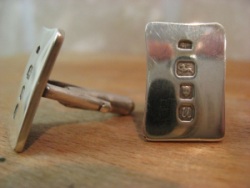
Alan Yates presents:
|
Mail to ASCAS: e-mail silverassociation@yahoo.it
Robin Holmes writes:
...Could you assist in identifying the marks shown on the fork
and spoon of this christening set?
In South Africa, everything was really British, and all
reference books etc. are of such, with a little from the US and
Canada so I really struggle to identify many marks, even with
the aid of some sites now on the web.
Best regards,
Robin Holmes

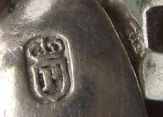
|
***ANSWER PUBLISHED IN MAY 2012 NEWSLETTER***
Julie writes:
... I have silver castor which is very similar to that in your
site.
I would love to know more about it.
Thank you for your time and look forward to hearing from you.
Julie
Your caster was made by The Goldsmiths & Silversmiths
Company, London 1919. Information about this firm are available
in my website at
http://www.silvercollection.it/englishsilvermarksXG.html.
Information about casters are available in ASCAS website at
http://www.ascasonline.org/articoloGIUG147.html
Giorgio Busetto
Charles Deheselle writes:
... I hope you can help me about a set of French cutlery.
I'd wish to identify the maker and, possibly, the family owner
of the coat-of-arms.
I wonder also about the meaning of the inscription DEPOSE on the
handle.
Thanks in advance
Charles Deheselle
The maker is Henri Chenailler, Manufacturer silversmith.
Sponsor's mark: radiating sun over HC over a 5 pointed star.
In our web site at
http://www.ascasonline.org/articoloAGOST133.html you can
read an article written by Robert Massart about the firm Paul
Canaux and successors.
This article was recently updated by the author adding new
interesting information about the chronology of the firm.
I believe that DEPOSE refers to a PATENT obtained (or requested)
for this flatware model.
I trust in the help of ASCAS members for a more complete and
qualified answer to your questions.
Giorgio Busetto
Maurizio writes:
... I have silver holy water font of which I ignore origin and
age.
Any suggestion will be greatly appreciated
Maurizio
Siddarth Lall writes:
... I'd wish to identify the maker of this bottle holder.
Many thanks
Siddarth Lall
The mark is badly rubbed. Anyway I believe this is the
mark "JD over WD into a shield" belonging to John and William
Deakin of James Deakin & Sons. Information about this firm and
its marks are available in my website at
http://www.silvercollection.it/ENGLISHSILVERMARKSXJDUE.html
Giorgio Busetto
Francis Miot writes:
...I greatly appreciate your site, but I'm unable to find
information about the mark found in a pair of gold (I believe)
spectacles.
The mark is a three arms candlestick between an S and, possibly,
an L.
Thanks for your time.
Francis Miot
Possibly the mark belongs to Société des Lunetiers (see my
website at
http://www.silvercollection.it/frenchsilversmithsS.html
Giorgio Busetto
Replies to questions
Naveen Bhatt
receives this answer about his hand mirror
(see February 2012 Newsletter)
Emil Fonfoneata writes:
... In the February 2012 newsletter there was a question
about a hand mirror.
That is a typical 19th Century Ottoman hand mirror, Turkey,
probably period of Abdulhamid II (tugra mark - 1876-1909)
Emil Fonfoneata
"A PAGE per MONTH"
In this column we present a page obtained from makers'
brochures, books, auction catalogs, advertising or whatever
other printed paper, related to silver, that may be of interest
for ASCAS members.
The images will be published at a "low resolution" level and for
private and personal use only
"A WORD per MONTH"
In this column we
present an abstract from a page of the "What is? Silver
Dictionary"
courtesy of


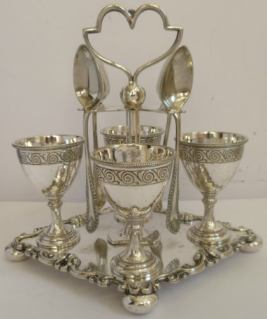
|
EGG BOILER - EGG CODDLER
|
"A SILVERSMITH per MONTH"
In this column
we present marks, information and history of silversmiths and
silver manufacturers.
This column is published under the kind permission of Giorgio
Busetto's website


DANIEL & ARTERThe firm was established in
Birmingham in the late 19th century (the first known
sterling silver hallmark was entered in Birmingham Assay
Office in 1882).
|
"A BOOK ON MY SHELF"
In this column we present books, new
or ancient, dealing with silver in all its aspects (history,
marks, oddities...). This isn't a "book review" but only a fair
presentation of some useful "tools" that anyone may have in the
shelf of his bookcase.
ASCAS members are invited to contribute to this column
(click to enlarge images)
In the "book on my shelf" of this month Karin Sixl-Daniell presents:

Custom Search
Closing our April 2012 edition of ASCAS Newsletter I hope you have appreciated its content.
Your comments, suggestions and advice will be of great help.
My thanks to Charles Deheselle, Emil Fonfoneata, Jeffrey Herman, Siddarth Lall, Robin Holmes, Francis Miot, Karin Sixl-Daniell, Alan Yates for their invaluable contributions.
Giorgio Busetto
Secretary
ASCAS is a community of people having a common
interest in antique silver.
|

